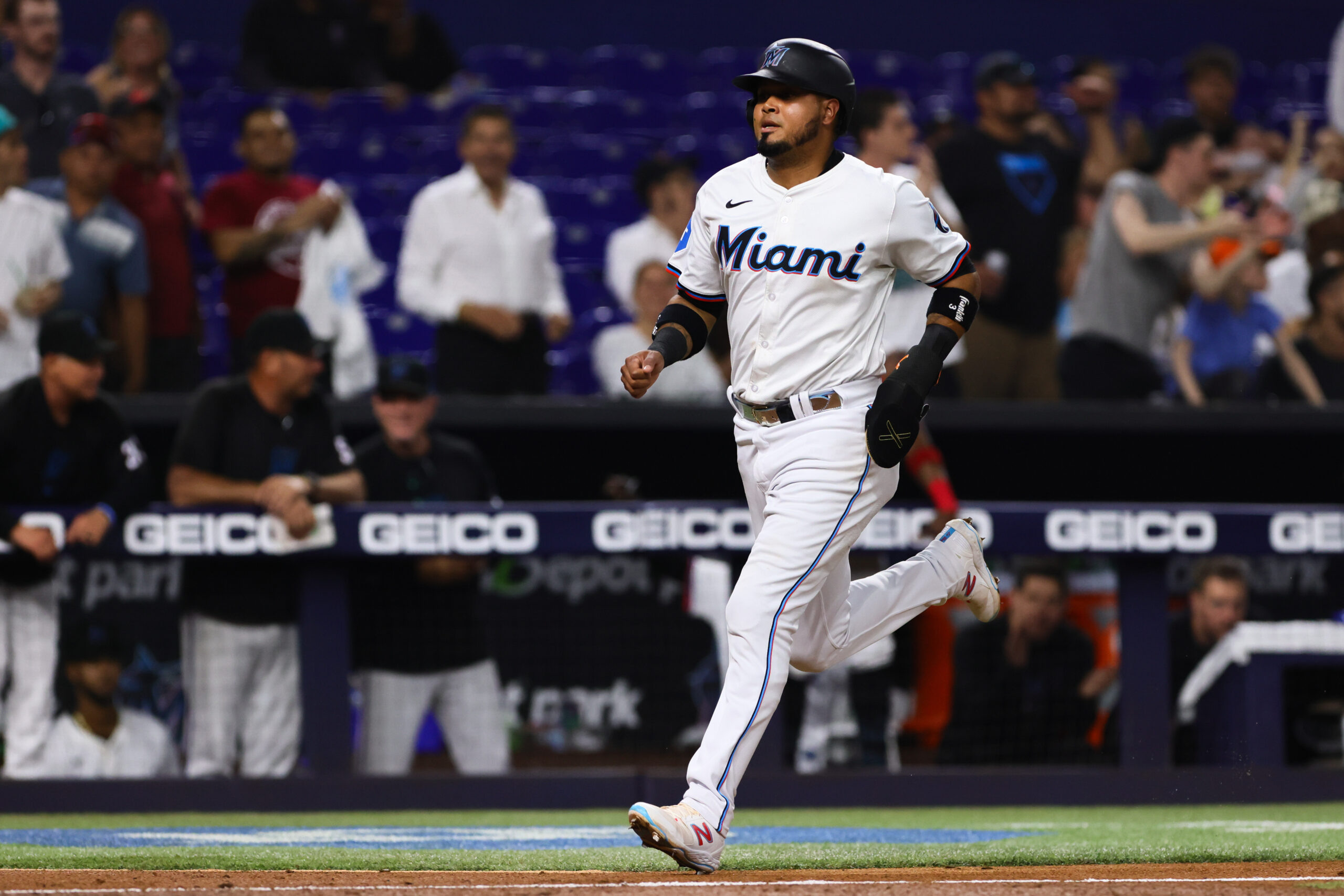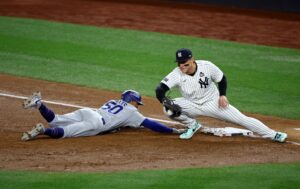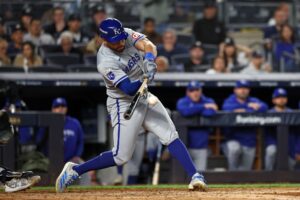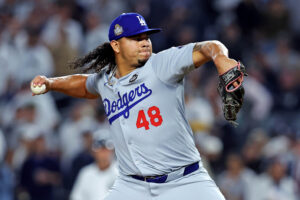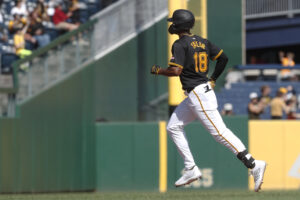The San Diego Padresit is
Welcome to San Diego, Luis!
We have acquired INF Luis Arráez and cash considerations from the Miami Marlins. Details: https://t.co/24ASMzOl37 pic.twitter.com/B8KC7MsMwI
— San Diego Padres (@Padres) May 4, 2024
Friday night’s acquisition of second baseman Luis Arráez sent shockwaves throughout the industry. Then, it simultaneously sent excitement for San Diego fans and disappointment in Miami. Finally, many questioned how Arráez would fit in the crowded Padres infield.
How Luis Arráez Fits The San Diego Padres Roster
San Diego Has A Decent Offense
Despite a roster overflowing with stars, the Padres won just 82 games last season and missed the playoffs. This season, the team enters Saturday with a .500 record and second place in the National League West. While it’s too early to say they’re not a good team, the Padres should be much better based on their star power.
An odd aspect of San Diego’s malaise is that while some stars have struggled offensively, the overall team offense has performed well. This season, the Padres rank within the top 15 in the league in wRC+, BB%, K%, and AVG. The 2023 offense ranked similarly.
In acquiring Arráez, Preller decided to strengthen a strength rather than address a weakness (run prevention). Arráez, 27, has won two straight batting titles and is a career .324 hitter. He pairs an elite contact ability with an okay walk rate and an excellent strikeout rate. He won’t hit for power or walk, but he will put the ball in play, get hits, and make pitchers work.
Arráez does mostly what the Padres offense already does well. One can argue that while the lineup gets deeper with Arráez, the Padres will only go as far as Manny Machado and Xander Bogaerts takes them. It’s fair to think that getting those two back to normal will be more impactful for the Padres than adding Arráez will.
Arráez Won’t Help The Padres Prevent Runs With Defense
The Padres will likely use Arráez as the primary DH. Since 2022, Arráez has predominately played second and first base but isn’t regarded as a strong defender. He is not a clear upgrade over Bogaerts at second or Jake Cronenworth at first. So, giving Arráez a glove might be more disruptive than helpful to the Padres.
sort of., Hannah Keyser recently wrote an article for The Ringer detailing how teams have not effectively used the DH position. The DH is meant to provide nothing but offense, yet many teams receive below-average production from this spot in the lineup.
“Is there a specific skill to DHing versus just hitting? I would defer to the people that have done it.”
For @ringer, the universal DH has sorta been an offensive flop (DHs are in their flop era?) and what good DHs know that teams don’t seem to apply. https://t.co/eeUrN5WuNf
— Hannah Keyser (@HannahRKeyser) March 29, 2024
San Diego might see an advantage in being one of a few teams using a pure hitter as a full-time DH. This move won’t help lower the team’s 4.19 ERA, which ranks 20th in the league. But it should increase the offense’s average of 4.86 runs per game.
Considering these numbers, the Padres’ sitting at .500 makes sense. So, scoring more with Arráez (and hopefully vintage Machado and Bogaerts at some point) theoretically could give the Padres a winning edge. Last year, the final National League Wild Card team won 84 games and went to the World Series. Plus, the team won the spot in just one game. Every game and every advantage matters in the new Wild Card era.
The Padres expect to remain in the Wild Card race this season. Many teams might choose to strengthen the defense and pitching in July. However, the Padres chose to improve the offense in early May. On paper, the move should earn the team a few extra wins months before other teams decide to buy or sell at the deadline. Perhaps this will make the difference in what should be a tight Wild Card race.
Preller’s Long-Term Vision
Throughout his tenure in San Diego, Preller has received more rope than most general managers would have. He’s gone through multiple spending sprees, multiple rebuilds, and even more managers. At this point, Preller is viewed as the general manager most on the hot seat.
So, for him to keep his job, he likely needs to make the postseason this year. This means that 2024 is more important for him than 2026 and beyond. This trade reflects that. The main pieces that the Padres gave up won’t impact the major league team for a few more years, but adding Arráez should help the Padres make the playoffs right now.
Preller likely knows that if the Padres don’t make the playoffs, with or without Arráez, he won’t be around when the prospects debut. The heat is on for Preller, which means that the long-term takes a back seat until he firmly saves his job.
From an ownership perspective, if this trade doesn’t result in a playoff berth, a new general manager can trade Arráez this winter and recuperate some of the package. It’s possible that they won’t sign off on this deal for a player with no control beyond this year.
Padres Asset Management
One can argue that the Padres could have used the prospects in this deal to strengthen a weakness (pitching) rather than add to a potent offense. San Diego gave up one prospect with a star ceiling, two with solid contributor projections, and one KBO veteran.
Arraez is obviously a special contact hitter; it's fun that the guy who's basically Present Day Tony Gwynn goes to SD.
But SD hasn't had problems scoring runs (3rd most entering day). They've had a ton of problems preventing runs. So, interesting they'd use prospects in this way
— Mike Petriello (@mike_petriello) May 4, 2024
Admean more depth, which means a lighter workload for mid-depth chart pitchers. This could keep more pitchers fresh down the road and/or give the Padres more options if some players struggle. Pitching has proven depth chart pitchers. This could keep more pitchers fresh down the road and/or give the Padres more options if some players struggle. Pitching has proven to be crucial in the postseason, and Arráez does not provide pitching insurance.
It’s fair to argue that Preller could have, or should have, used the four prospects to acquire one or two arms. If he wanted to make a move now, Miami might have been the only team willing to work with him. Though that limits the players available, the Marlins have good pitching (despite a plethora of injuries) that could help San Diego’s staff.
Preller might have been able to use this package and acquire two relievers. Or part of the package to acquire one arm now, then use the remaining pieces in a separate deal at a later date. Instead, Preller decided to once again allocate limited resources to acquire a star middle infielder despite having clear needs elsewhere on the roster.
Main Photo Credits: Sam Navarro-USA TODAY Sports


